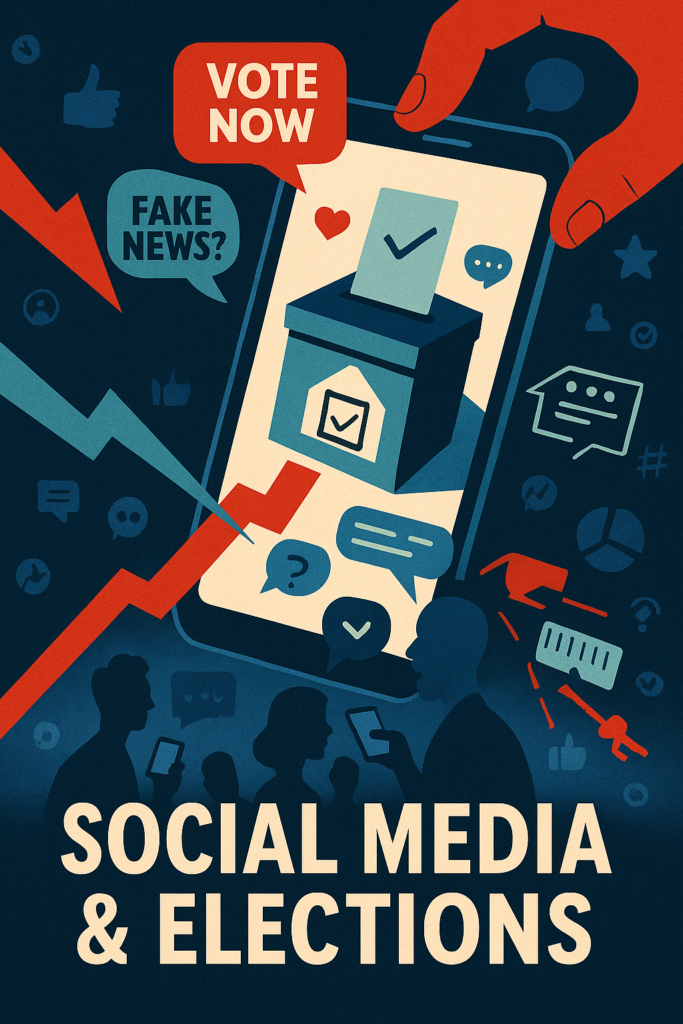Let’s be real—our thumbs have more political power than we ever imagined. With a few swipes and taps, we can boost a candidate, bury a scandal, or fall headfirst into a rabbit hole of conspiracy theories. Social media hasn’t just joined the political conversation—it’s practically running the show.
Welcome to the digital age of elections, where memes win hearts, misinformation muddles waters, and political influence is just a viral post away.
From Soapboxes to Smartphones: The Rise of Digital Campaigns
Back in the day, politicians hit the road in campaign buses, kissed babies, and hoped the evening news would say something nice. Now? They tweet. They go live on Instagram. Moreover, they release campaign videos tailor-made for TikTok’s algorithm. Digital campaigns have flipped the game.
Social media platforms offer something old-school rallies never could: direct, unfiltered access to voters. A candidate can broadcast their message to millions in seconds, target specific demographics with creepy precision, and raise millions in donations without leaving their living room.
But with great reach comes great risk.
Misinformation: The Elephant in the Newsfeed
Here’s the ugly side. Not everything going viral is true. Shocker, right?
During elections, social media becomes a minefield of misinformation. Think deepfakes, doctored images, fake endorsements, and wildly misleading headlines. And the worst part? These lies spread faster than the truth. Studies show false political content gets shared more often and travels further than factual news.
Why? Because misinformation is designed to trigger us—anger, fear, outrage. It’s emotional clickbait. And algorithms eat that up like candy.
This doesn’t just confuse voters. It erodes trust in institutions, delegitimizes results, and creates echo chambers where people only hear what they want to believe.

Political Influence: Who’s Really Pulling the Strings?
The scary part isn’t just what politicians say online. It’s who’s listening—and who’s manipulating the message behind the scenes.
Political influence is no longer confined to campaign managers and speechwriters. Tech-savvy consultants, data analysts, and sometimes foreign operatives all play a role. Cambridge Analytica’s scandal was a wake-up call—data from millions of Facebook profiles was used to craft hyper-targeted messages aimed at swaying voter behavior.
Since then, regulations have tightened (a bit), but social platforms still operate in a Wild West of political influence. Sponsored posts can be hard to distinguish from regular content. Bots can mimic real users. And shady third-party actors still manage to sneak through the cracks.
The Good, the Bad, and the LOLs
It’s not all doom and gloom, though.
Social media has democratized political participation. Anyone with a phone can raise awareness, organize protests, fact-check candidates in real time, or call out injustice. Marginalized communities have found their voice, and viral content can push important issues into the spotlight faster than traditional media ever could.
Plus, let’s not ignore the power of humor. Satirical accounts, political memes, and savage comment sections have become cultural currency. While some dismiss this as “low-effort activism,” it keeps people engaged—and that’s half the battle.
So… Are We Doomed?
Nah. But we do need to wise up.
Elections are no longer just fought in town halls and TV debates. They’re fought in retweets, TikToks, and trending hashtags. That means digital literacy is more important than ever. Voters need to question what they see, verify sources, and understand how algorithms shape their feed.
Platforms also need to step up. More transparency, better moderation, clearer political ad labeling. Some progress is happening, but it’s slow—and the stakes are high.
As for the rest of us? Keep scrolling, but scroll smart.
Social media isn’t going anywhere. It’s part of our political ecosystem now, for better or worse. The challenge isn’t to unplug—it’s to engage consciously. Because the next time you’re watching cat videos, a major political shift could be happening just one swipe away.


